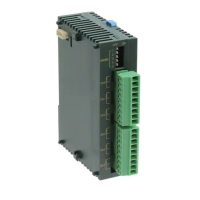
Do you have a question about the Panasonic FP0 and is the answer not in the manual?
| Model | FP0 |
|---|---|
| Communication Ports | RS232C, RS485 |
| Power Supply | 24V DC |
| Operating Temperature | 0°C to 55°C |
| Type | Programmable Logic Controller (PLC) |
| I/O Points | 16 to 128 |
Critical situations leading to death or serious injury.
Critical situations leading to injury or property damage.
Copyright and trademark information for the manual and product.
Guidelines for unit installation location and environmental conditions.
Precautions for handling static electricity before touching the unit.
Recommendations for cleaning the unit without causing damage.
Requirements for using an insulated power supply with a protective circuit.
Details about the various components of the FP0 system.
Information on connecting expansion I/O units and analog I/O units.
Illustrates how control units and expansion units can be combined.
Information on standard ladder diagram and IEC61131-3 compliant programming tools.
Describes the various parts and terminology related to control units.
Provides detailed specifications for control units.
Illustrates the internal circuit diagrams for different output types.
Shows the pin assignments for various control unit types.
Explains how to back up the 10 K step type control unit.
Describes the parts and terminology for expansion I/O units.
Lists the specifications for expansion I/O units.
Provides internal circuit diagrams for expansion I/O units.
Shows the pin layouts for various expansion I/O units.
Identifies and describes the functions of various parts of the S-LINK control unit.
Details the general and controller-specific specifications for the S-LINK unit.
Explains how to connect the power supply to the S-LINK control unit.
Outlines the correct sequence for turning on power supplies in the S-LINK system.
Describes the process of refreshing S-LINK I/O data after power-up.
Explains how to recognize and set addresses for S-LINK I/O devices.
Provides guidance on interpreting error indicators and troubleshooting S-LINK system errors.
Explains how to interpret error addresses displayed on the S-LINK control unit.
Explains the expression of numbers for input/output relays and specifying X and Y numbers.
Details the fixed I/O allocation for FP0 control units.
Describes how I/O numbers are automatically allocated for expansion I/O units.
Provides the expansion method for adding expansion units to the control unit.
Lists crucial notes and precautions before installing the FP0 unit.
Explains the procedure for attaching the FP0 unit to DIN rails.
Details how to use the FP0 slim type mounting plate for installation.
Explains how to use the FP0 flat type mounting plate for installation.
Highlights safety precautions related to wiring and potential malfunctions.
Guides on connecting the power supply cable to the FP0 control unit.
Provides instructions for proper grounding of the instrument to increase noise suppression.
Gives examples and notes for wiring sensors and switches.
Provides notes and precautions for protecting outputs from inductive and capacitive loads.
Details the procedure for wiring the terminal block socket.
Explains the procedure for wiring using MOLEX connectors.
Details the procedure for wiring using MIL connectors.
Outlines the procedure for wiring the RS232C port.
Explains what constitutes duplicated output and how to check or enable it.
Covers BCD data representation and how to handle it in the PLC.
Explains the use of index registers for indirectly specifying memory areas.
Details types of operation errors and their causes.
Explains how leading edge detection instructions operate and their precautions.
Lists programs that may not execute correctly and how to rewrite them.
Describes how to perform program rewriting while the system is running.
Explains methods for changing timer/counter set values during RUN mode.
Details how forced input/output operations are processed during RUN.
Explains how to set the clock/calendar timer values.
Introduces the high-speed counter, pulse output, and PWM output functions.
Lists specifications and restrictions for high-speed counter and pulse output functions.
Explains the outline, input modes, I/O allocation, and instructions for high-speed counter.
Covers the outline, control modes, I/O allocation, instructions, and sample programs for pulse output.
Explains the outline and instructions for PWM output functions.
Details how to use the RS232C port for serial communication.
Explains the system register settings required for serial communication.
Describes operations related to start and terminal codes during serial communication.
Explains the self-diagnostic function and LED status indications.
Provides guidance on troubleshooting common issues based on LED status and error codes.
Lists performance specifications including I/O points, program memory, and operation speed.
Details the I/O allocation for control units, S-LINK control units, and expansion units.
Describes the numbering and function of relays, memory areas, and constants.
Provides a table mapping I/O addresses to S-LINK addresses.
Lists specifications for the FP0 Power Supply Unit and FP0 I/O Link Unit.
Provides illustrations and reference measurements for control and expansion units.
Shows the dimensions and connection terminals for the FP0 Power Supply Unit.
Explains the procedure and dimensions for mounting the FP0 unit on a DIN rail.
Details the dimensions and mounting configurations for the FP0 slim type mounting plate.
Explains how to use the FP0 flat type mounting plate for installation.
Lists detailed specifications for various cables used with FP0.
Illustrates the connection example between the FP0 RS232C port and a PC.
Details system registers, special internal relays, and special data registers for FP0.
Lists basic instructions with their Boolean representation, symbols, and descriptions.
Provides a table of high-level instructions, their operands, and descriptions.
Lists error codes, their names, operation status, and descriptions.
Details the commands for MEWTOCOL-COM communication.
Provides conversion tables between decimal, hexadecimal, binary, and BCD data.
Lists ASCII codes and their corresponding character representations.
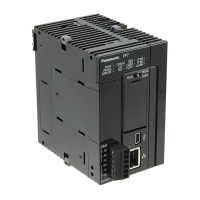
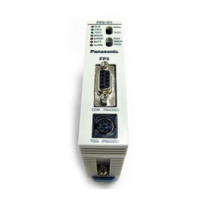
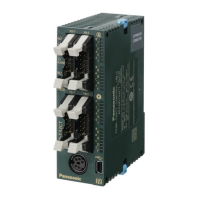



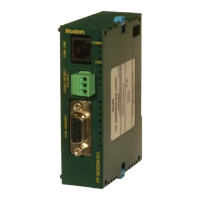

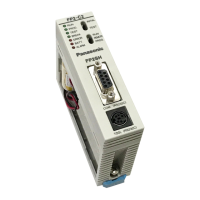
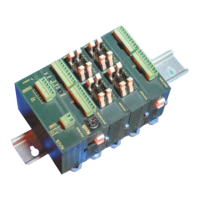
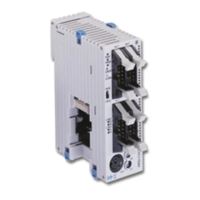
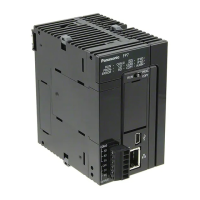
